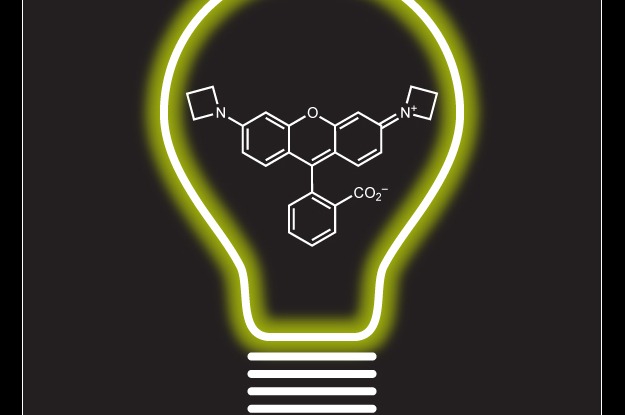
Chemical & Engineering News honored Group Leader Luke Lavis in their first annual "Talented 12" feature. The magazine highlighted twelve up-and-coming chemists who are using their research to solve global problems.
Lavis was profiled for his work in designing fluorescent dyes that facilitate sophisticated biological studies. The Lavis lab uses organic chemistry to build these new fluorescent probes from classic, century-old fluorescent molecules.
Working with the Betzig, Tjian, and Liu labs, Lavis has created dyes that can enable researchers to track individual protein molecules inside living cells, which provides new insights into how the transcription of DNA is regulated. These bright “Janelia Fluor” dyes are also being used in labs around the world for advanced imaging applications.
Lavis has also developed new chemistry to synthesize fluorescent tags for the Nobel Prize-winning photoactivated localization microscopy (PALM) developed at Janelia by Eric Betzig and Harald Hess. PALM enables superresolution images by shining low levels of a specific frequency of light to activate dyes, which can then be imaged one by one to create a high-resolution map of molecular location. Chemistry developed in Lavis’s lab has enabled the synthesis of a palette of photoactivated fluorophores with absorption maxima that span from the blue to the red. These dyes can complement other photoactivated dyes such as fluorescent proteins, enabling multicolor PALM experiments.
Lavis is also working to improve the ability of small molecules to operate in living tissue. Small molecules are important tools to measure and modulate cellular function, but there is no good way to target these molecules to specific cells in complex multicellular environments. His lab is developing better methods to deliver compounds to cells, and also devising ways to use designer enzymes within specific cells to unmask dyes, small-molecule indicators, and drugs. Lavis collaborates extensively with many groups at Janelia to explore further refinements of this strategy, with the hope of developing a collection of easy-to-use molecules to monitor or manipulate individual cells in the mouse, fish, fly, or worm.
Read more about the Talented 12 in Chemical & Engineering News

